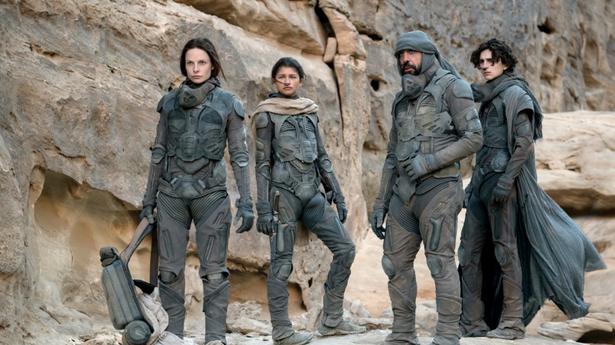
7 Oscars and counting: Namit Malhotra, CEO of VFX firm DNEG on what goes into creating magic on screen
The Hindu
The use of visual effects has evolved over the past 7-8 years, and is no longer about mere quick-fix solutions in post-production
Before this year’s Academy Awards, the British VFX firm DNEG had already notched up six Oscars for their special effects work on films like Interstellar, Inception and Blade Runner 2049. They have now added a seventh Oscar with their brilliant work on Denis Villeneuve’s Dune. The film, based on the eponymous science fiction novel by Frank Herbert, has been widely praised for its distinctive visual style — and the special effects were an integral part of that.
In a Zoom interview, Namit Malhotra, chairman and CEO of DNEG, shares some insights about the process of putting together an average big-studio Hollywood movie’s special effects; and the many ways in which visual effects techniques are changing the way filmmakers think about their craft.
“It’s a very detailed process,” Malhotra says, “and it can take 6-18 months, depending upon the type of project. And it goes back to the very first process of filmmaking, which is scriptwriting. The script becomes the foundation for designing or creating the world you finally see in the film, so there’s a lot of art there. A concept artist sits down with the director and makes their rendition, which we work off — obviously, for the people designing the visual effects, those images can be much more useful than words describing the same thing.”
In the “pre-visualisation” step of the process, as Malhotra describes, a rough animated sequence of the final scene is created. All the other department heads, including, and especially, the director, can see this pre-visualisation and offer their inputs. Once this sequence is locked, the process of producing the visual effects can begin — that’s where the ‘visual effects supervisor’ starts working with the director on-set. Whether it’s practical effects or digital effects, the supervisor works closely with the director to get the sequence just right. Which is why at the Oscars, it came as a surprise to many when Villenueve was not nominated in the Best Director category, despite Dune being nominated in every single technical category.
There are also more specific kinds of problem-solving involved when it comes to visual effects. “There are specialists for every aspect,” Malhotra says. “Let’s say you are shooting a big car chase sequence. So there will be someone to design the look of the car, somebody else will figure out the precise physics of a heavy car tumbling off a cliff — their job is to make it look as authentic and scientifically accurate as possible.”
When you talk about special effects to the average film viewer — there’s a widespread misconception that everybody everywhere relies heavily on ‘green screens’ when it comes to visual effects, that is actors pretending that the green screen is actually the eventual digital background. The assumption is that all of this is remote and fixed in post-production, that the visual effects team is thus at a distance from the on-ground shoot location.
This is simply not true anymore, especially over the past 7-8 years. Malhotra says. “If you look at Interstellar, one of the movies we won an Oscar for, you’ll see that it was one of the first movies to do away with the green screen, to a large extent. We had these big, high-quality digital projectors that were projecting different kinds of backdrops. In the scene where the main characters are flying through the ‘wormhole’, they’re actually looking at the world outside and you can see the wonder and amazement on their faces.”





















 Run 3 Space | Play Space Running Game
Run 3 Space | Play Space Running Game Traffic Jam 3D | Online Racing Game
Traffic Jam 3D | Online Racing Game Duck Hunt | Play Old Classic Game
Duck Hunt | Play Old Classic Game











